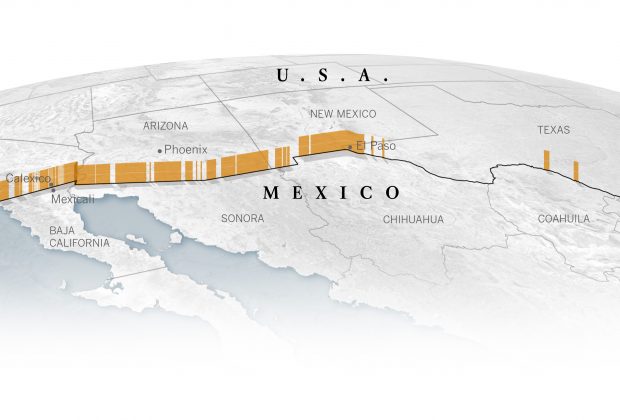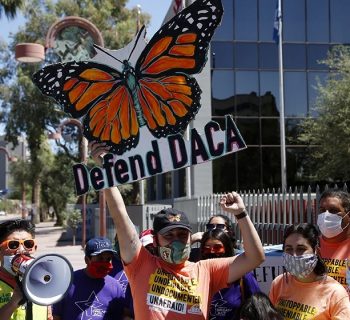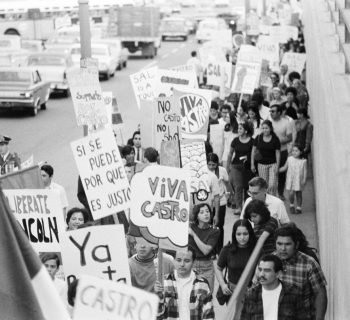By: Los Angeles Times Staff ~ L.A. Times ~ April 5, 2019
Is Trump able to shut down the southern border with Mexico? Will building a wall stop the flow of drugs? Is there an actual crisis at the border?
We separate misconception from fact.
1. Trump says he is going to shut down the border
It would be nearly impossible to shut down the entire border
President Trump has more than once threatened to close the border with Mexico, with the most recent threat aimed at showing his displeasure over Central American asylum seekers trying to cross into the United States.
But Thursday, a day before traveling to California, Trump said he would give Mexico “a one-year warning” before imposing tariffs on Mexican goods. “If that doesn’t work, we’re going to close the border,” the president said.
“I will do it,” Trump said. “I don’t play games.”
But the border is roughly 2,000 miles long, with some type of barrier covering about 650 miles of it. Physically closing the entire border would be logistically impossible.
What Trump is probably referring to are the 47 official ports of entry along the southern border.
Daily passenger and pedestrian entries at border checkpoints
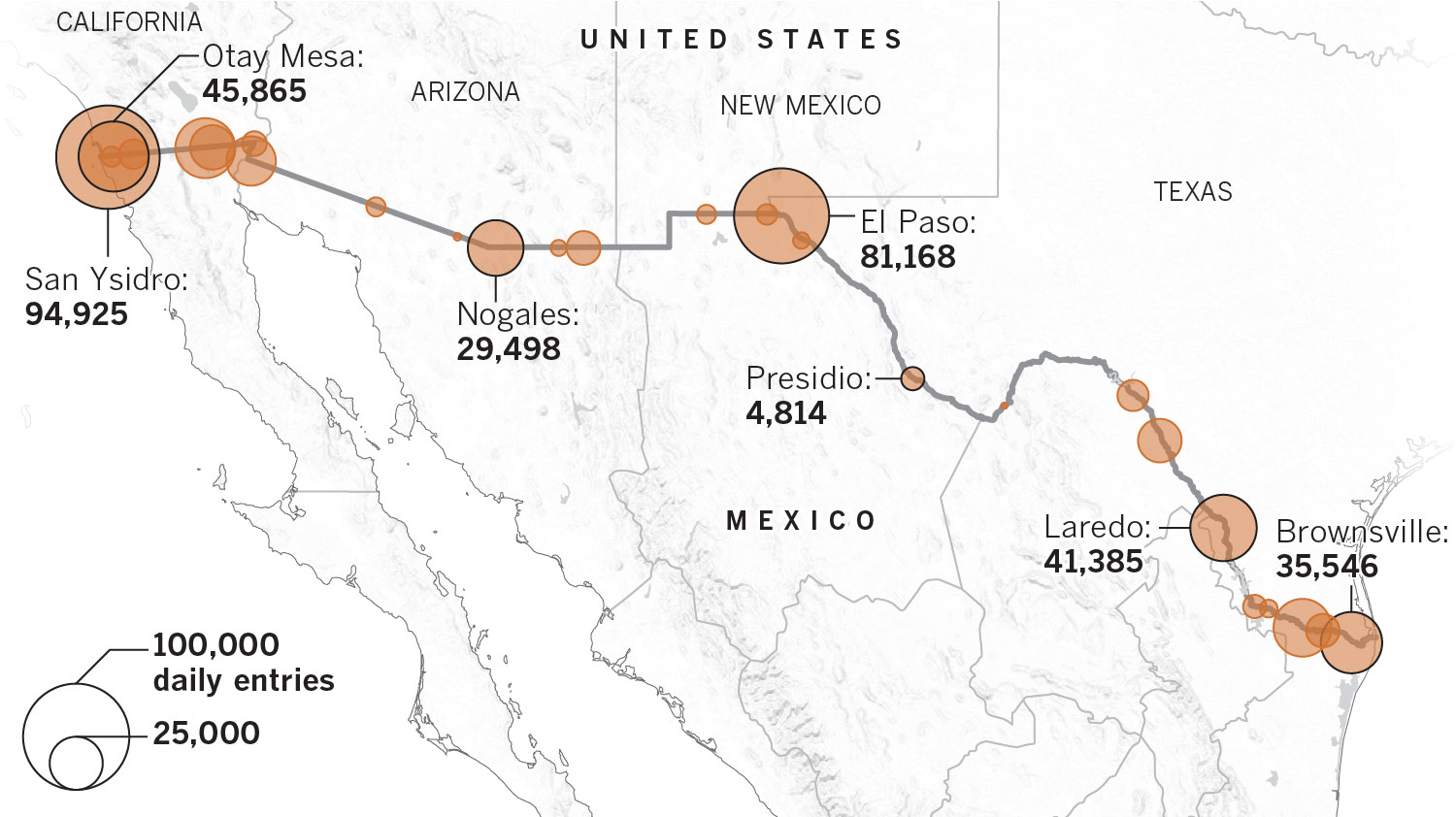
Closing every port of entry would require more staffing at the border. The Department of Homeland Security has been facing personnel shortages in the thousands, but the administration is reassigning Customs and Border Protection officers from ports of entry to help Border Patrol agents operating primarily between those points.
And there are economic concerns. Each day, more than 1 million people and about $1.7 billion in commerce are processed through official ports of entry. The U.S. Chamber of Commerce has warned that a shutdown would hurt farmers and manufacturers across the nation, as well as workers and consumers.
Two-way trade in goods between Mexico and the United States has increased from $81.4 billion in 1993 — the year before the North American Free Trade Agreement took effect — to $557.6 billion in 2017. Mexico has remained the United States’ second-largest export market since 1995, with exports totaling $242 billion in 2017.
The San Diego customs district — which includes the San Ysidro Port of Entry — accounts for 12.1% of all U.S. imports from Mexico, including components for the aerospace industry and avocados.
When the San Ysidro crossing — where some 95,000 people enter in cars and on foot each day — was closed in November for five hours, people were prevented from crossing to shop, work or attend school. San Ysidro shop owners lost an estimated $5.3 million in revenue, according to local officials.
If the ports are shut down, the economic impact will have a ripple effect, starting at towns along the border, said Shannon K. O’Neil, a senior fellow at the Council on Foreign Relations. “There’s a really direct local effect there.”
Most drugs from Mexico come through official ports of entry
The consensus among security and drug trafficking experts is that building a wall itself will have little effect on the illicit drug trade along the southwest border. Most illegal drugs smuggled from Mexico come through legal ports of entry, often disguised as commerce, according to the U.S. Drug Enforcement Administration.
Some lawmakers from states hit hard by opioid abuse say they believe a wall will keep drugs out, said Adam Isacson, director of defense oversight at the Washington Office on Latin America.
“They want more fencing ’cause they believe it’s going to keep out things like fentanyl,” he said. “But that’s just not how it’s arriving.”
Experts and other lawmakers are concerned that pulling Customs and Border Protection officers from ports of entry could potentially create more opportunities for drug traffickers to get through.
Homeland Security Secretary Kirstjen Nielsen last week acknowledged that traffickers use official crossings and suggested closing the border would stop the flow.
“A lot of the drugs do come through the ports of entry,” Nielsen said. “If the lane isn’t open, then, you know, in some senses the drugs cannot get through in a mass way, because the vehicles won’t be getting through.”
3. More immigrants are illegally crossing the border
The number of illegal crossings is down – and has been down
The Trump administration is portraying a crisis at the border, but numbers show fewer people have been illegally crossing the southern border compared with longer-term data. Customs and Border Protection data show apprehensions along the U.S.-Mexico border have dropped sharply since a 2000 peak:
U.S.-Mexico border apprehensions
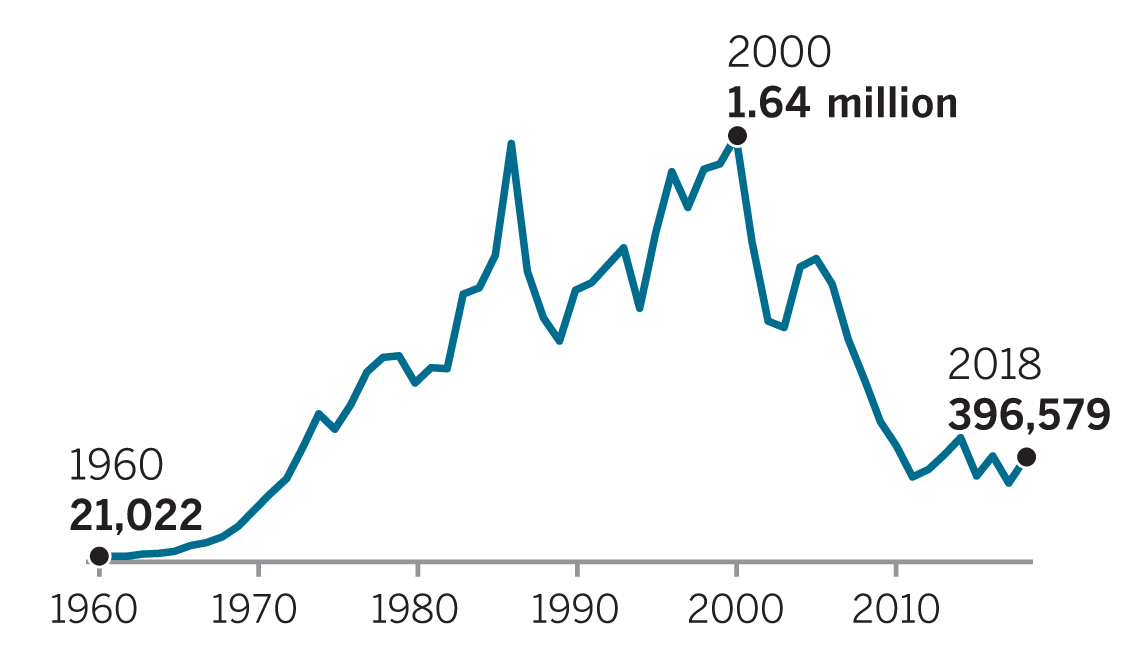
In February, Customs and Border Protection arrested 66,450 migrantscrossing the border illegally, the largest one-month total in the last decade. The numbers will probably continue to rise because warmer weather brings a seasonal uptick in migration; the agency estimates that number will top 90,000 in March.
Annual apprehensions by month
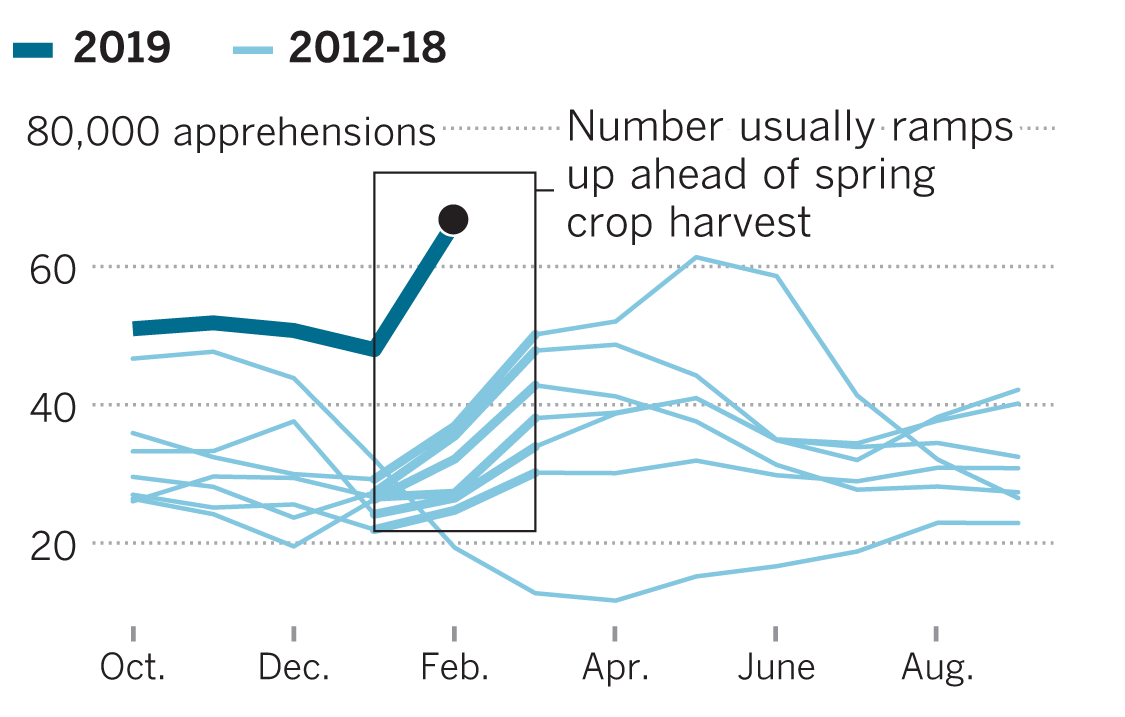
In February, Trump declared a national emergency pointing to the border. He later used the figures from that month as justification. But experts point to the long-term decline in border crossings.
“Everyone keeps on focusing on the numbers from a year ago and the numbers from last month,” said Nora Demleitner, a law professor at Washington and Lee University who specializes in crime and immigration. “When you compare it over a longer time frame, the number is really not that high.”
4. Most illegal immigration is coming from the Mexico border
More illegal immigration occurs through people overstaying their visas
For the last 10 years, most illegal immigration has occurred by people overstaying their visas rather than by illegally crossing the border, according to a study published in January by the Center for Migration Studies.
In 2016, an estimated 320,000 visitors to the U.S. — 62% of total arrivals — who had temporary visas overstayed them. Over a seven-year period, most of the arrivals who lacked legal status came to the U.S. by air travel.
“It is clear from our research that persons who overstay their visas add to the U.S. undocumented population at a higher rate than border crossers,” Donald Kerwin, executive director of the center, said in a statement. “This is not a blip, but a trend which has become the norm.”
The Department of Homeland Security does not provide comprehensive data for immigrants who legally entered the U.S. then overstayed their visas.
The department’s most recent and reliable figure, according to the Government Accountability Office, is that 702,000 visitors who came to the U.S. by air or sea in 2017 overstayed. The Homeland Security report did not have overstay estimates for those who traveled by land or information on overstays from prior years who may still be in the U.S., according to the GAO.
“Not only is a wall expensive,” Kerwin said, “it fails to address the issue at hand.”
5. Trump has been securing our border by building more walls
Not one new linear mile of border wall has been completed under Trump
So far, Trump has been unsuccessful in securing from lawmakers the $5.7 billion he has demanded to finance more than 230 miles of a border wall.
Instead, the spending bill passed by Congress and that Trump signed into law to avoid a second shutdown appropriates less than a quarter of that — $1.375 billion for 55 miles of barrier.
Types of barriers along the U.S.-Mexico border
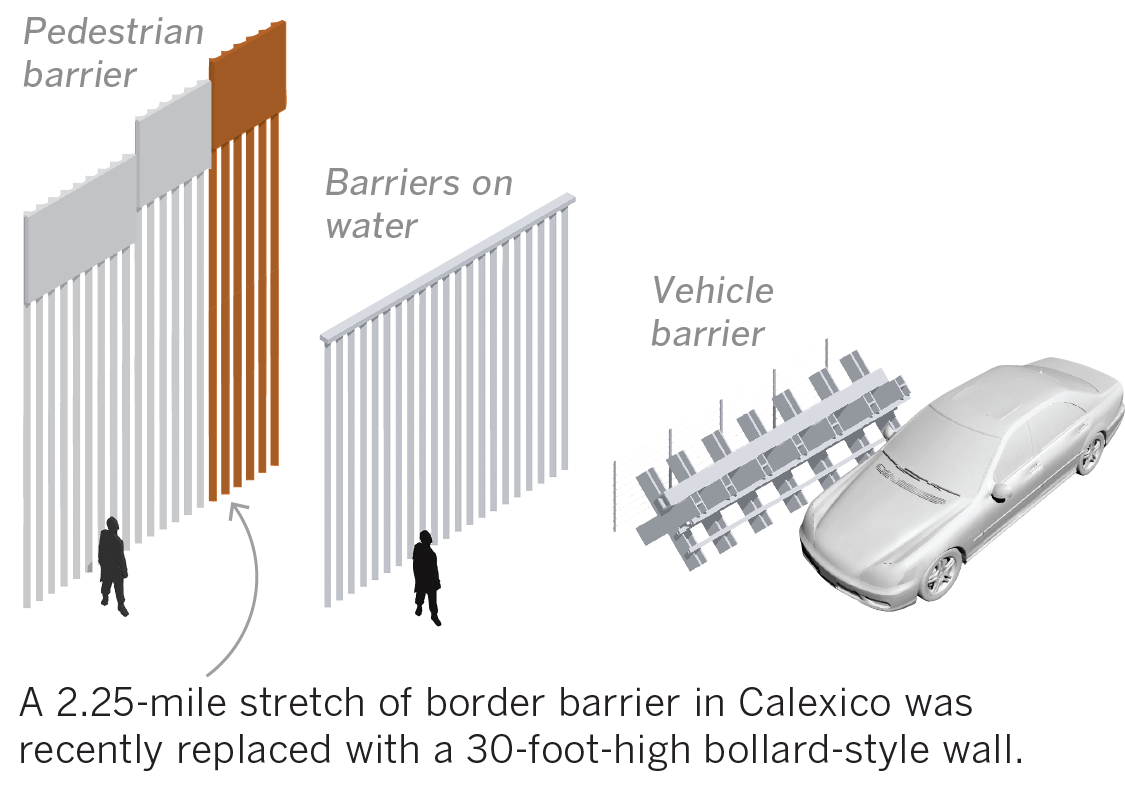
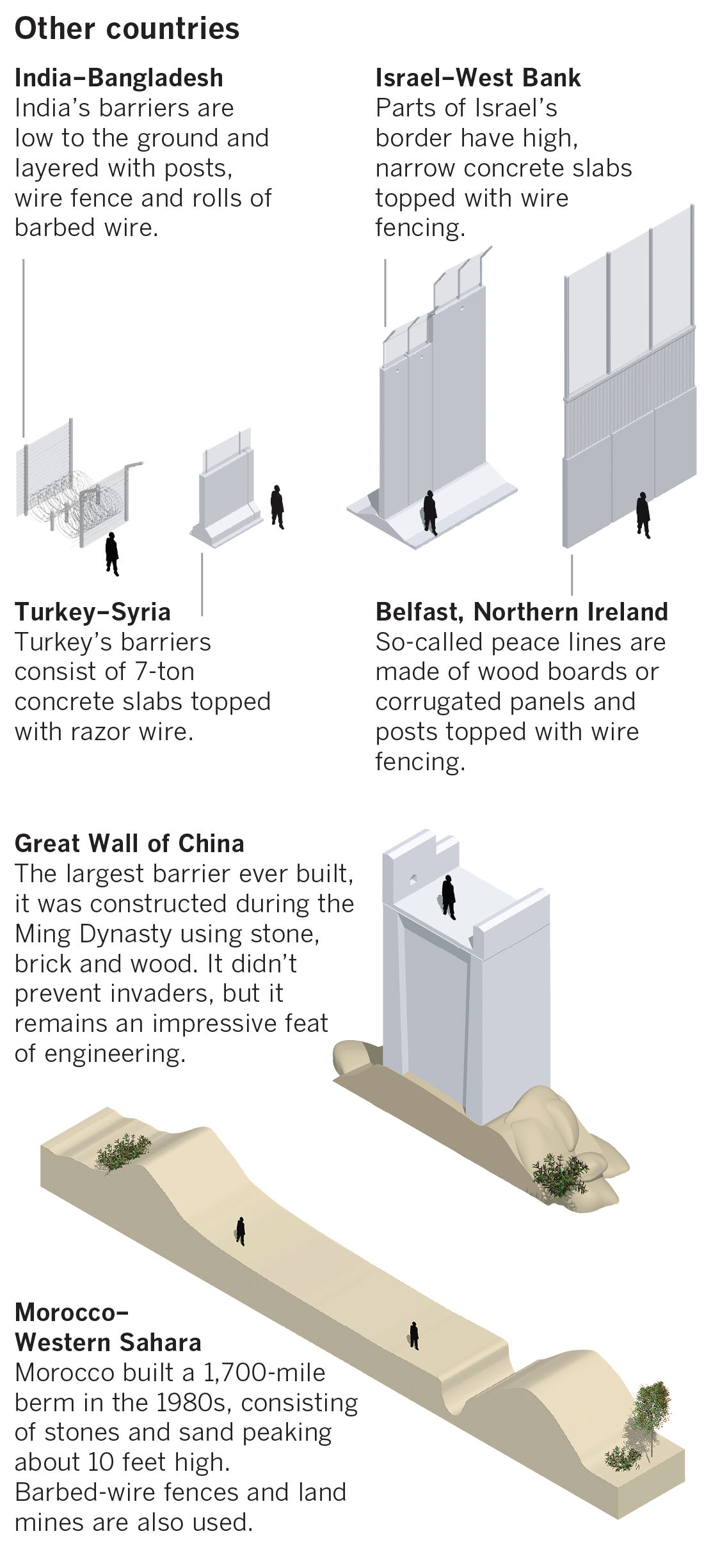
Before that spending agreement, Congress had approved nearly $1 billion to replace more than 50 miles of fencing in California, New Mexico and Texas, the Government Accountability Office reported. On Thursday, Customs and Border Protection announced in a statement leading up to Trump’s visit to the southern border that it will begin constructing a 13-mile stretch along the Rio Grande Levee Wall System, a project the president claimed had already begun in February.
Despite opposition from Congress, Trump declared a national emergency in February to “confront the national security crisis on our southern border.” The White House said it would pull an additional $6.6 billion, besides the $1.375 billion already provided by Congress in the spending bill, from other federal funding for building or repairing more than 230 miles of border wall. Of that total, about $3.6 billion would come from military construction projects and most of the rest from an account for projects to combat drug trafficking. The Pentagon recently notified Congress it had authorized its first transfer toward wall funding, of $1 billion.
Trump acknowledged the process of the declaration — which drew criticism from both Democrats and Republicans — would be unpredictable. Last month, the president submitted an annual budget request to Congress asking for another $5 billion for new border wall.
Source: Los Angeles Times Staff ~ L.A. Times ~ April 5, 2019

